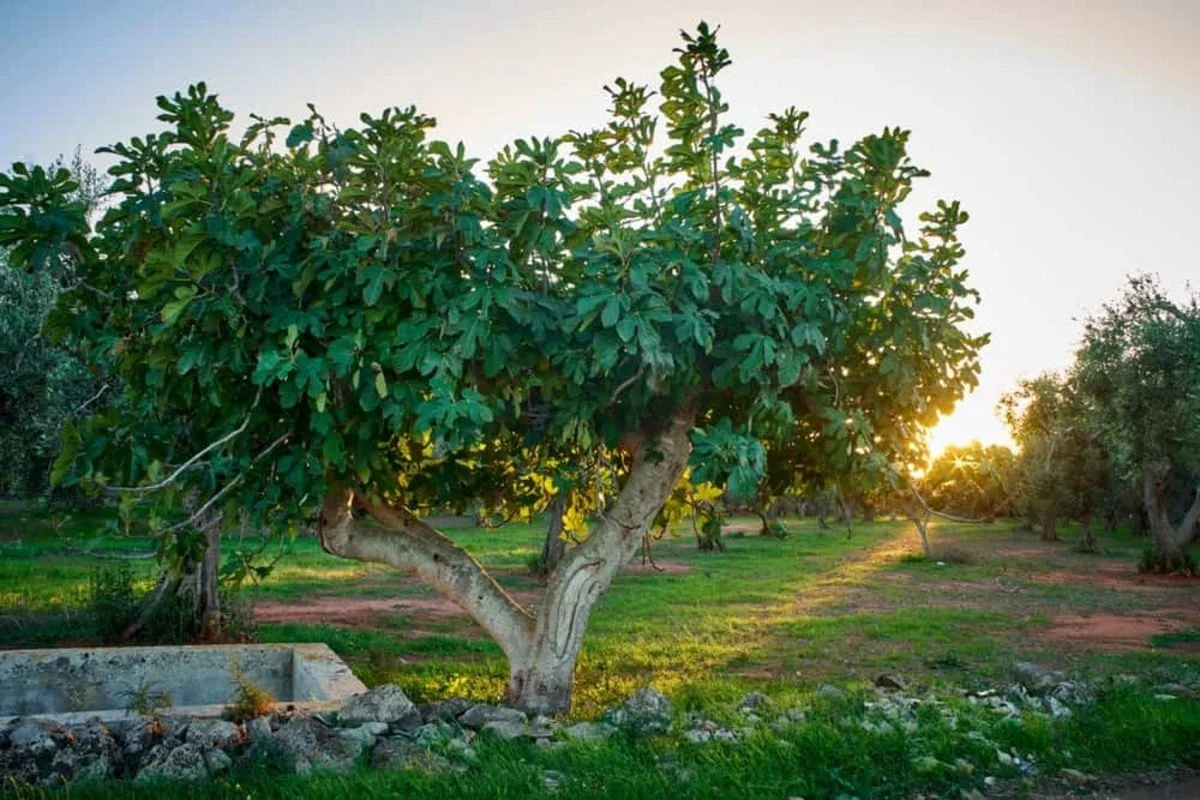“Created to be Invested”
Third Sunday in Lent
March 23, 2025
Fig tree in a garden
Isaiah 55:1-9
Luke 13:1-9
Children’s Message:
All right. I have a seed, dirt, and water. Who knows what to do with these items? Yes. Put the dirt in the pot. Put the seed in the dirt. And water the seed.
So, now what? What is supposed to happen? Oh yes. The seed is supposed to grow. Does that mean I’ll get a bigger seed? Oh, not like that. The seed will grow into a plant. If I planted an acorn, will I get a marigold? No. You only get the kind of plant that you planted.
Well, that’s disappointing. Okay. I’m ready. Where’s the plant? You mean I have to wait for it? Oh, good grief. I guess that makes sense. We heard Jesus tell a parable about a fig tree. The owner kept going out to look for fresh figs, but the tree wasn’t ready, yet. So, he wanted to cut it down.
That would be like me dumping this all out on the ground just because I didn’t get a plant right away. Important things take time. But that’s not all, is it? If I don’t water this, the plant won’t grow. If it doesn’t get sunlight, it won’t grow. We can’t just expect good things to happen just because we want them to happen. We have to help. We have to do the work. Or we won’t get to harvest what we planted.
Let’s pray. Dear God, you’ve given us everything we need to make this world a place of goodness and growth. Help us tend to your creation with kindness and faith. Amen.
Message:
Now, despite all the knowledge I just dropped with the kids, I’m no gardener. I’ve often contemplated a vegetable garden, but I think about the commitment it requires, and I get turned off. I’m more of the ‘plant something sturdy, weed a couple times a year, turn on the automatic sprinklers, and hope for the best’ kind of girl. Half the time, I’ve forgotten what I’ve planted and end up pulling it, thinking it’s a weed.
Speaking of which, we could use one or two people to take over the planters outside the church doors and maintain the courtyard. We all now know who NOT to put in charge of that.
Today’s passage is complicated. It’s not entirely clear what the tragic deaths mentioned at the beginning have to do with the parable of the fig tree. It’s not entirely clear what a fig tree is doing in a vineyard. And it’s not entirely clear why the people in the crowd mention the murder of Galileans at the hands of Pilate in the first place.
What is clear is how Jesus responds. Their deaths have nothing to do with sin—which was (and is) often a way people think about suffering. If it happens to you, then you did something to deserve it. No, they are no worse than anyone else. The Galileans were tragically killed by an evil man in power. The workers were killed by a tragic accident when the tower fell. They weren’t any worse—or any better—than anyone else. This isn’t a punishment from God.
Not only that, Jesus says, but unless you change your ways—unless you repent—you’ll go out the same way. Wait. What? Didn’t I just say it had nothing to do with sin? I did. And it doesn’t. Repentance isn’t just about confessing personal sins. It’s about changing the way you think—about everything.
His comment on repentance comes after the example of the Galileans killed by Pilate. Essentially, you can’t keep thinking that appeasing the empire will somehow ensure peace. When evil is in power, the only so-called peace achieved is through violence. And just keeping your head down and hoping no one will take notice of you is no way to ensure justice. If you aren’t part of the power structure, your end will follow that of the minorities cut down before you. But you’re not dead, yet.
And the workers killed by the falling tower? Accidents happen. Life is often cut short. We don’t have an unlimited amount of time to make the changes we want or need to make. Thus, the parable of the fig tree. For three years, the owner expected to see fruit. He expected to see the fig tree fulfill its purpose. For three years, the owner went home disappointed. At the breaking point, he wants to cut it down and make room for something that will do what it was made for.
The vine dresser makes his plea for more time. This time, he’ll work with it. He likely ignored it. The fig tree wasn’t his deal. He’s hired for the grape vines. But he’ll dig around it, water it, fertilize it. He’ll change how he views the tree and how he works with the tree. He’ll invest time and energy into the tree. If, then, it’s still barren, then the owner can cut it down. But it’s not dead, yet.
How often are we like the vine dresser? We just assume that things will grow and do what they’ve been planted to do. Much like myself and my own ‘gardening’ tactics. If it grows, it grows. If it doesn’t, well—whatever. Plant something different. Try something new.
But what if we rely on the garden for our food? What if the garden once thrived, but the care of the gardener fell away? What if the gardener became complacent and took for granted that the garden would always produce? All he did was toss a little water at it once in a while.
What if that is how we view the Church? Or specifically this congregation? How do we invest in the things we love? The things we benefit from? Do we assume it will always be there? Do we assume someone will take care of it? What are we waiting for?
We’re not dead, yet. And we have so much to offer—as a congregation and as individuals. We are created to be invested in the life that God has created. To dig and water. And, sometimes to fertilize—though I think there may be some who have taken that particular task far too seriously. As long as we’re alive, we have work to do—life-giving work; work that honors God and others; work that helps our world and our community heal and grow and thrive and bear fruit.
It isn’t easy work. And it isn’t quick work. It takes time and patience. It takes faithful stewardship of the soil. And it takes a holy imagination. An imagination like Reverend Cheryl Lindsay:
As we journey toward Good Friday, we remember that Jesus will have an encounter with a cut down tree. Further, on that day, Jesus will be cut down by the powers of an imperialist state. The Bible is silent about the type of wood used to form the cross that Jesus would carry and then be crucified upon. Historians, arborists, and biblical scholars speculate that cypress, pine, or cedar were used.
But perhaps it was a fig tree, spiritually if not physically. The fig tree is resilient, hardy, and prolific. It can survive the burns of a fire and come back in another year with new life. It needs little nutrients or water to survive and resists pests. Fig trees also respond well to heavy pruning. It’s entirely possible that an immediate observation would suggest that a fig tree has been destroyed when it’s actually ripe for renewal.
What an image for Christ. A fig tree that, even left for dead, will come back bearing fruit for all who hunger. Imagine what it would look like to tend such a tree and feed all in need with the fruit we harvest.
Pastor Tobi White
Our Saviour’s Lutheran Church
Lincoln, NE

